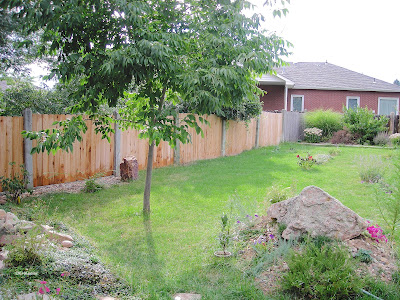We see the world around us, but we can't see what it was. Visiting San Francisco in November, the National Park Presidio was full of informational signs about the history of the site, pointing to multiple transformations since Spain established a fort there in 1776. (Native Americans left their mark too, as mounds of discarded sea shells, which have been dated back to 740 CE).
Some changes were dramatic. This is the creek as I saw it, the drainage full of shrubs (Thompson Reach).
 |
| Stream zone that was covered, then restored |
Below, another photo of Thompson Reach from Lincoln Boulevard, including the informational sign. The white building with the red roof is straight ahead my photo, through all the shrubs.
 |
| Building a park, paths and native plants to follow |
 |
| Young tree |
 |
| Mature trees, planted at the Presidio long ago |
 |
| hayfield |
But we walk through our built environment without seeing the massive changes we have made.
I am trying to figure out what I think would be desirable land-use. I don't really want to live on a prairie hillside, bouncing over unpaved roads to my door. I like the amenities of suburbia or I'd live somewhere else. But it is also true that American settlers largely replaced native plants and animals with ones they were familiar with, from Europe and from the eastern U.S. This has left us in the 21st century with a major educational project, to introduce people to native plants and animals and convince them to grow them in their yards and in the public spaces they support. So very much of North America no longer supports its natural communities.
 |
| suburban yard |
A variety of organizations are promoting natives for suburban yards, but it is a tough sell.
First, there's the terrific information-gap. Only a couple generations before me, in the central U.S. there were few people. It was dangerous and scary, and people struggled to survive. They brought exotics for food and for familiarity, and taught their children the same values. We have convince people that the wild has been banished, and to appreciate the organisms native to the place they are living.
Secondly, this project is extremely local. A few hundred miles away, "native" is different. Thus, when we ask people to embrace natives, those differ from place to place. We can't do "one plant list fits all" to bring natives to suburbia across the U.S.
 |
| suburban yard |
I don't know the answer. But, as you walk or drive through your neighborhood, try to envision it 300 or 500 years ago. What part of that can you still see? Then fast forward 300 or 500 years. What is that likely to be? We must ask: what can we restore, despite the presence of rows of houses and paved streets, to provide sustainability and protect our natives? It is a lot of work, but the National Park Presidio is restoring natives while supporting outdoor recreation within San Francisco. We must all build that kind of future.
Comments and corrections welcome.
References
History of the Presidio. 2021. www.presidio.gov link (Accessed 12/14/21)
Kathy Keeler, A Wandering Botanist
More at awanderingbotanist.com
Join me on Facebook: https://www.facebook.com/AWanderingBotanist



No comments:
Post a Comment